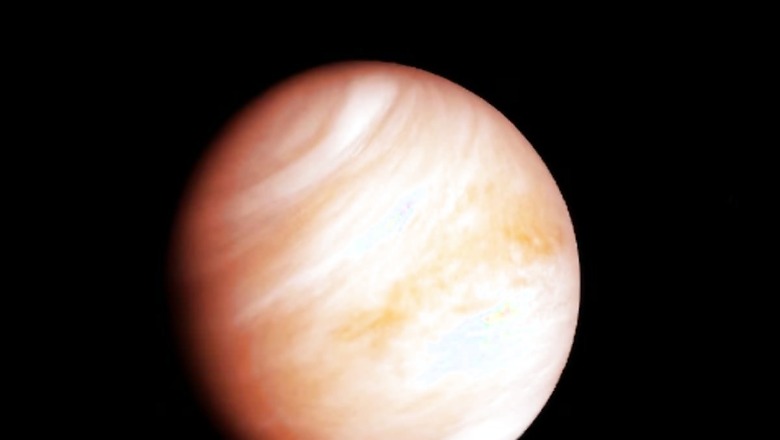
views
A joint mission of the European Space Agency (ESA) and Japan Aerospace Exploration Agency (JAXA), BepiColombo has revealed that gases like carbon dioxide and oxygen are leaking from the upper layer of the atmosphere of planet Venus. The mission which was launched in 2018 aims to do a comprehensive study of the Mercury after a flyby of Earth and two flybys of Venus.
Detections in previously unexplored regions of Venus’s magnetic environment show that carbon and oxygen are accelerating to a speed that can escape the planet’s gravitation pull. The mechanism behind this phenomenon is still unknown. According to the researchers, the significance of this study lies in the understanding of Venus’s evolution and the conditions that led to its current state. The results of this study have been published in the journal Nature Astronomy.
Venus does not have a strong magnetic field like Earth. Its upper atmosphere is exposed to the solar wind and the flow of charged particles ejected from the Sun. Due to this interaction, a weak, comet-shaped induced magnetosphere is created around the planet. This interaction can cause ions, particularly hydrogen and oxygen ions, to be carried into space between the solar wind and Venus’s upper atmosphere. These ions are separated from the planet’s atmosphere due to the solar wind. This process, known as atmospheric escape, contributes to the gradual loss of atmosphere from Venus over time.
Lina Hadid, CNRS researcher at the Plasma Physics Laboratory and the lead author of the study, said that this is the first time that the positively charged carbon ions are seen escaping the atmosphere of Venus.
“These are heavy ions that are usually slow-moving, so we are still trying to understand the mechanisms that are at play. It may be that an electrostatic ‘wind’ is lifting them away from the planet, or they could be accelerated through centrifugal processes.” said Lina Hadid as quoted in the study.
BepiColombo’s data, collected over 90 minutes during its flyby of Venus, helped to understand the chemical and physical mechanisms at work in Venus’ magnetosheath. In due course of observation, BepiColombo’s instruments measured the mass of the charged particles it encountered and captured the chemical and physical changes that were driving the atmospheric escape.
The satellites under the BepiColombo mission are planned to arrive on Mercury on December 5, 2025.


















Comments
0 comment